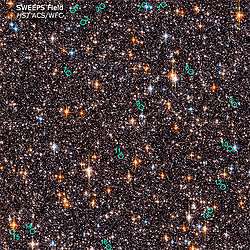PEGASE
PEGASE is a design for a space observatory developed by France in the early 2000s.[1] It combined formation flying with infrared telescopes operating as a double-aperture interferometer.[1] Three free-flying satellites would operate together;a beam combiner and two siderostats.[1] The baseline of the interferometer would be adjustable to between 50 and 500 meters.[1] The goal of the mission is the study of Hot Jupiters ("pegasids"), brown dwarfs and the interior of protoplanetary disks.[2] The design was developed by Centre National d'Études Spatiales and was studied for a launch as early as 2010–2012.[3] However, the Phase-0 part of the study in 2005 suggested it would take 8 or 9 years to develop.[1]
References
- 1 2 3 4 5 Pegase: a space-based nulling interferometer
- ↑ M. Ollivier, et al. (2005). "PEGASE: a DARWIN/TPF pathfinder". Proceedings of the International Astronomical Union. 1: 241–246. doi:10.1017/S1743921306009380. Retrieved 2007-07-23.
- ↑ O. Absil; et al. (2004). "Pegase: a space interferometer for the spectro-photometry of Pegasides" (PDF). Université de Liège. Archived from the original (PDF) on June 22, 2006. Retrieved 2007-07-23.
This article is issued from Wikipedia - version of the 9/10/2016. The text is available under the Creative Commons Attribution/Share Alike but additional terms may apply for the media files.

